Looking to boost your planting game?
Try something new!
Add these unexpected items to the bottom of your planters and see amazing results.
Curious to find out what they are?
Let’s get started!
Utilizing Coffee Filters for Cleaner Plant Watering

Many plant enthusiasts have found that lining the bottom of plant pots with a coffee filter is an effective way to manage moisture levels in the soil. These filters absorb excess water and gradually release it, helping to maintain an optimal environment for your plants’ roots. There’s a lack of scientific evidence, but the widespread success stories make it a popular gardening hack.
Equally useful, these filters prevent soil from escaping through the pot’s drainage holes, which keeps the watering process tidy and reduces the mess when moving the pot. However, keep in mind that coffee filters are not a lasting solution. Being biodegradable, they break down over time and typically require replacement every six to eight months.
When incorporating this technique, place a coffee filter at the base of the pot, ensuring it covers the drainage holes to catch any loose soil. You may need multiple filters for larger pots to ensure complete coverage.
To enhance their effectiveness, moisten the coffee filters slightly before installing them. This helps them stick to the pot and stay in place as you fill it with soil and plants. As the filter decomposes naturally, you can replace it with a new one to continue enjoying the benefits of cleaner and more efficient plant watering.
Utilizing Pinecones for Planter Filler
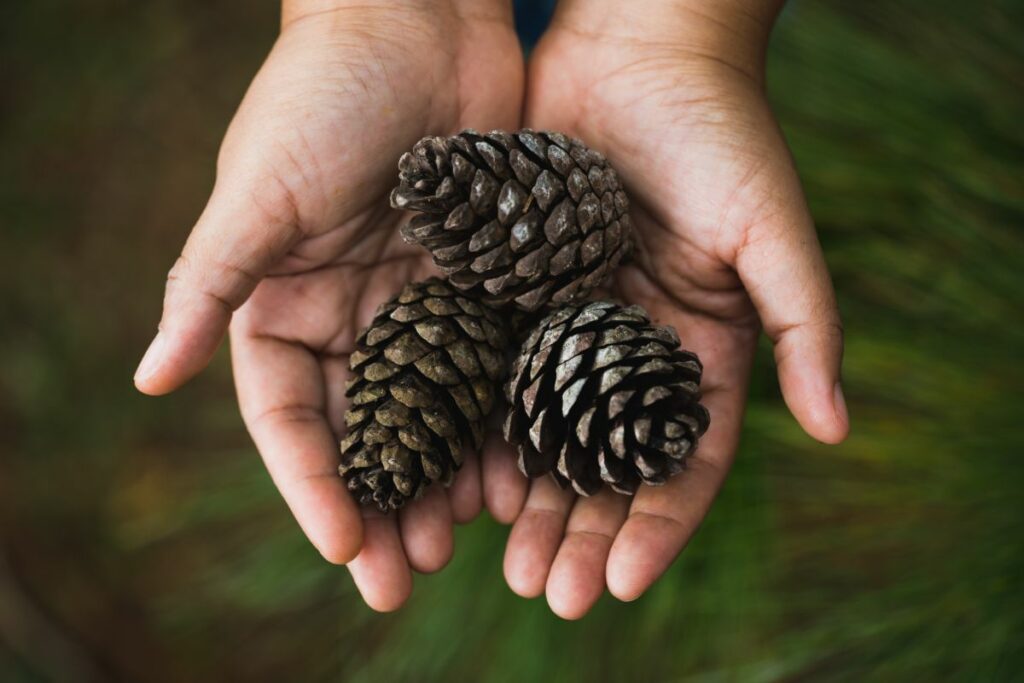
When you find your garden areas covered with pinecones, consider them more than a simple byproduct of trees. They can be a resourceful and cost-free addition to your gardening practice, particularly when used in large plant containers.
Benefits of Pinecones in Planters:
- Weight Reduction: Pinecones can replace up to one-third of the soil in large planters, significantly reducing the overall weight without compromising on the planter’s stability.
- Nutrient Release: As pinecones decompose gradually, they enrich the soil by returning nutrients back into it.
How to Apply:
For Large Planters Only: Opt to use pinecones in planters that are spacious enough to negate the need for a substantial volume of soil.
Layering Technique:
- Place an even spread of pinecones at the container’s base.
- Ensure not to exceed filling one-third of the pot’s depth.
- Layer soil over the pinecones and plant your choice of flora, ensuring roots have adequate distance from the pinecones.
Considerations:
- Avoid Small Planters: Smaller containers do not benefit from pinecones as a filler since they require more soil for root expansion and access to nutrients.
- Watch for Waterlogging: Pinecones may create a perched water table. This is not an issue in large planters due to the substantial amount of soil which prevents the roots from sitting in water. In contrast, smaller containers do not provide this protection and may lead to root rot.
By following these guidelines, you can enhance your garden planters, making them lighter and more nutrient-rich while also engaging in a sustainable practice using natural materials at hand.
Stabilizing Your Plant Containers with Bricks

Using bricks can effectively secure your planters, particularly if they are top-heavy or situated in high-wind areas. Bricks at the base add weight and stability, reducing the risk of your planters toppling over.
- Choose Your Planters: Select a primary, functional planter and a secondary, decorative one.
- Positioning Bricks: Place bricks at the bottom of the decorative planter, not inside the soil of the functional planter.
- Assembly: Place your functional planter within the decorative one. Arrange the bricks around the bottom, creating a stable base.
Remember to avoid placing bricks directly into the functional planter to prevent soil contamination and to ensure proper plant health. This method works well for larger plants that are prone to unbalancing, such as tall trees or monstera plants. By following these steps, you’ll maintain both aesthetics and the stability of your planters.
Enhancing Planters with Twig Fillers
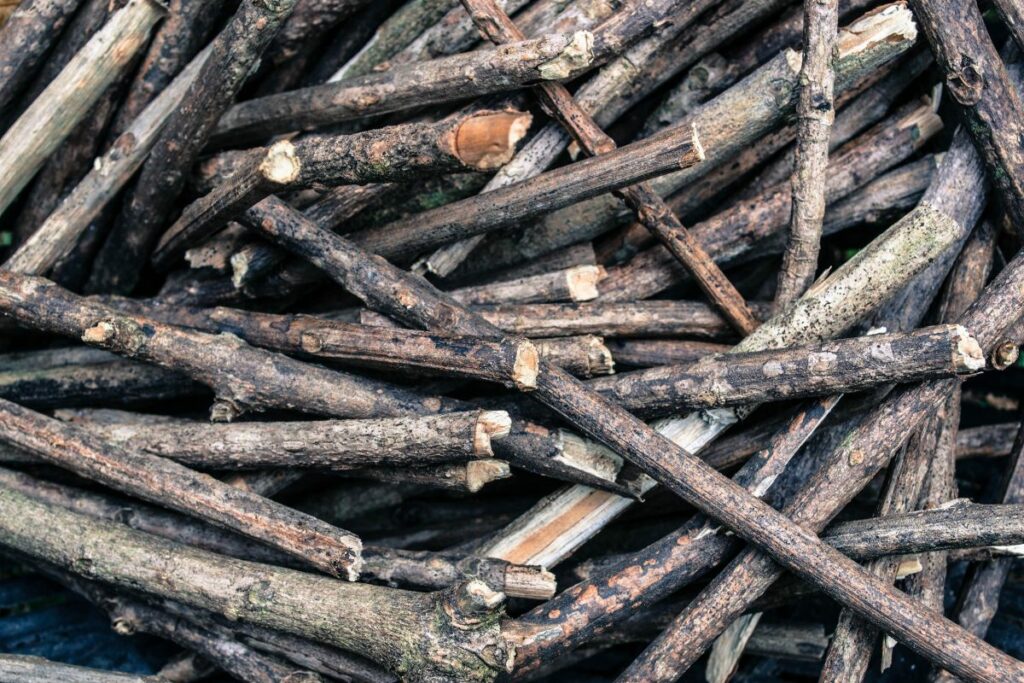
If you’re tending to your garden and find yourself with broken branches, consider using them as a structural base in your large planters. These twigs are not only a cost-effective solution but also environmentally friendly since they’re repurposed directly from your yard.
- Availability: Ubiquitous and cost-free.
- Sustainability: Contribute to the soil’s nutrition as they decompose.
- Decomposition Time: Takes several years to decompose completely, particularly when shredded.
Using these branches can significantly decrease the amount of potting soil needed for your heavy containers, which in turn makes them lighter and more manageable to reposition. They are especially suited to bulkier pots as opposed to small ones, where they might impede water drainage.
Filling Method:
- Ensure a loose arrangement of twigs at the base.
- Mix various twig sizes to maintain adequate airflow.
- Avoid overpacking to prevent drainage issues.
Remember that while these twigs will eventually nourish your plants as they break down, they are primarily intended to lighten your planters and are not a quick-release fertilizer replacement. Implementing them with care by spacing them out effectively will optimize planter health and mobility.
Eggshells Enhance Plant Growth
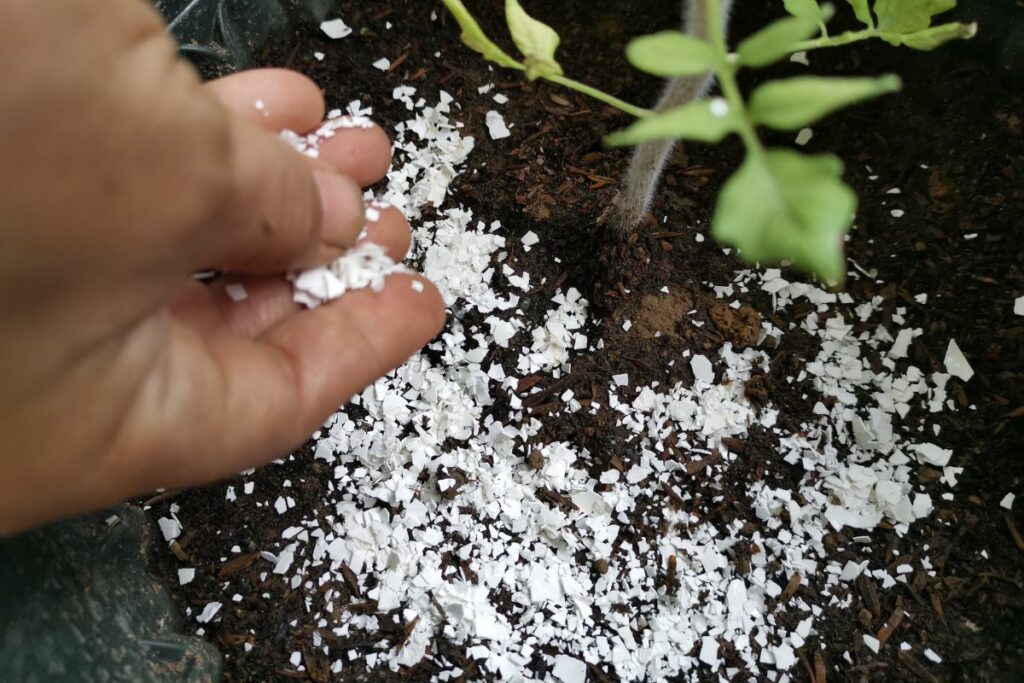
Eggshells, abundant in calcium carbonate and essential minerals, can be a valuable addition to your plant care routine. Unlike common practice where the shells are placed atop the soil, beneficial calcium absorption occurs at the plant’s root tips. Thus, positioning crushed eggshells at the planter’s base may yield better results.
For optimal use, follow these steps:
- Save your eggshells and allow them to air-dry thoroughly.
- Break down the shells into fine particles using a coffee grinder or blender.
- Combine the pulverized shells with potting mix, distributing the blend within the lower third of your planter.
- Fill the remainder of the container with soil before planting.
This layering technique will form a gradual nutrient release system for your plants. Be mindful when adding elements at the container’s base; it may inadvertently create a perched water table, leading to poor drainage. To monitor this, consider using a see-through container, which permits the observation of any pooling water.
By incorporating these steps, you enrich your plants’ environment, fostering better growth without the need for artificial fertilizers.
Transform Broken Terracotta into Drainage Aids
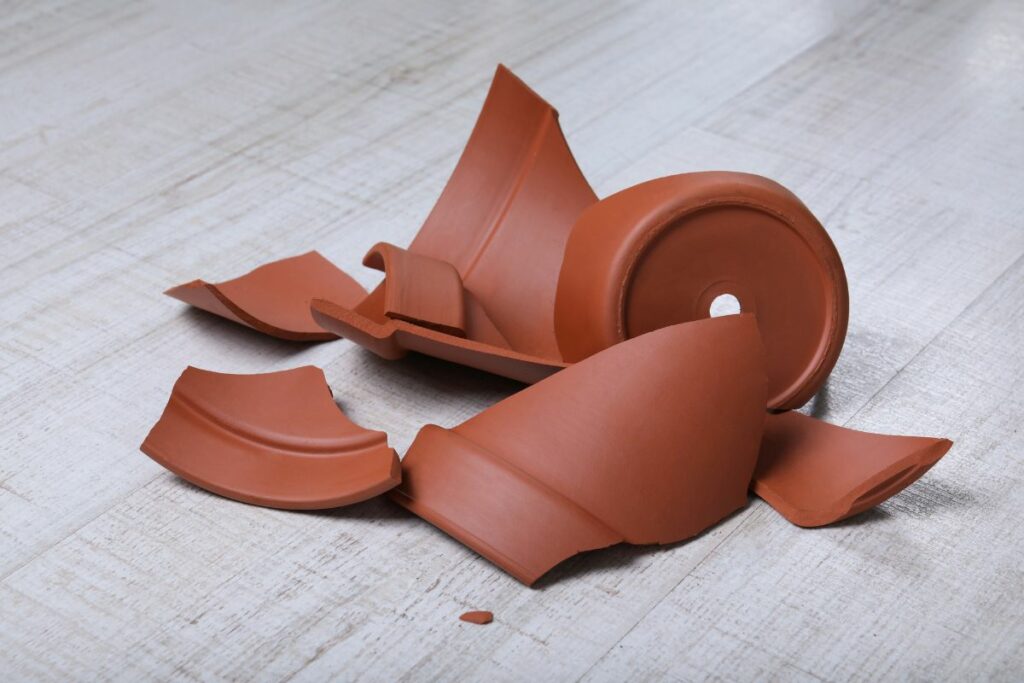
When your cherished terracotta planters break, don’t discard the pieces. These fragments can efficiently keep soil from escaping the bottom of new pots. The inherent qualities of terracotta make it perfect for this purpose. It allows water flow yet prevents soil leakage, especially in pots with oversized drainage openings that frequently lead to messy overflows during irrigation.
Begin by selecting medium-sized terracotta pieces. Prior to using them, smooth out any sharp points with sandpaper to protect plant roots that may entwine with the shards. Position a minimal number of pieces, one to three preferably, just over the drainage aperture. This simple step forms an effective barrier.
Instructions:
- Choose medium-sized terracotta fragments.
- Sand down sharp edges for root safety.
- Place 1-3 pieces atop the drainage hole.
Benefits:
- Reduce soil spillage.
- Maintain unobstructed water flow.
Tips:
- Avoid using too many pieces; this could restrict water drainage and lead to water accumulation, harming your plant.
Enhance Your Heavy Planters with Floatation Devices
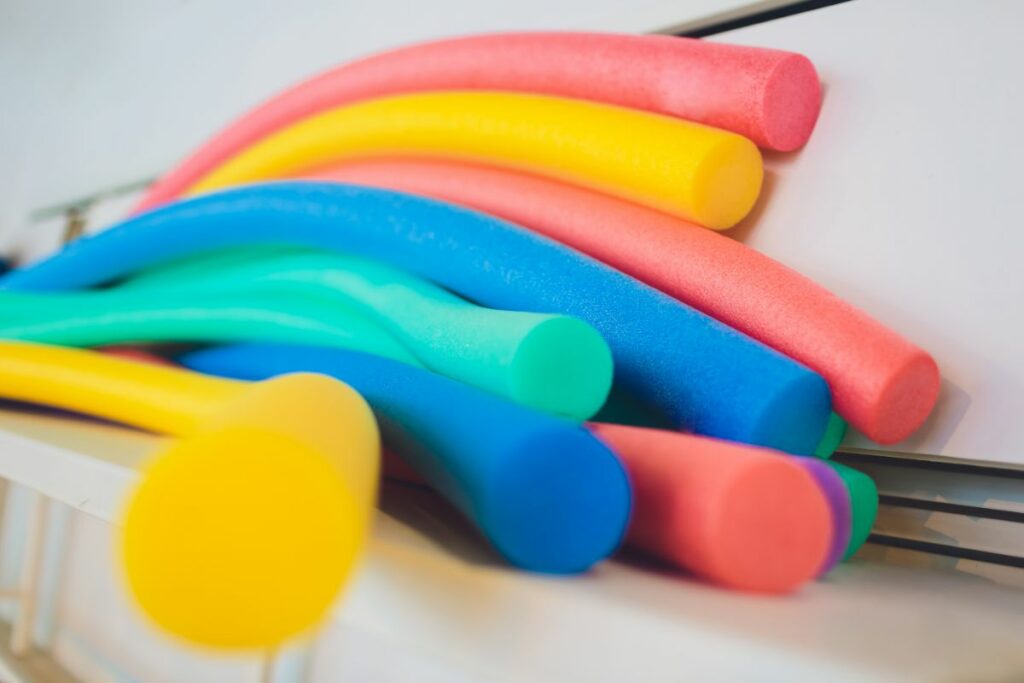
Incorporating flotation devices designed for pool activities can significantly reduce the mass of large garden pots. An innovative tip originating from a social media influencer entailed the use of these buoyant objects below the soil surface. These materials are not only light but also facilitate aeration, bringing dual benefits when used as a foundation within oversized terra-cotta or ceramic plants holders.
- Cost Efficiency: Filling the base with these foam tubes is more economical than using exclusively soil.
- Material Selection: Opt for variants minus polyvinyl chloride (PVC) to evade the release of unwanted compounds into your greenery sanctuary.
- Water Management: This approach is a crafty means to engineer a water table within the pot. However, there’s a workaround.
For optimal moisture regulation and to avert potential excess water retention, here’s a modified technique:
- Place a compact planter within a more spacious one.
- Circle the foam tubes at the base of the outer vessel.
- Settle your greens encased in the smaller pot atop this improvised foam ‘pedestal.’
Your vegetal display benefits from this setup, ensuring healthy roots and an aesthetically pleasing yet physically lighter arrangement.

